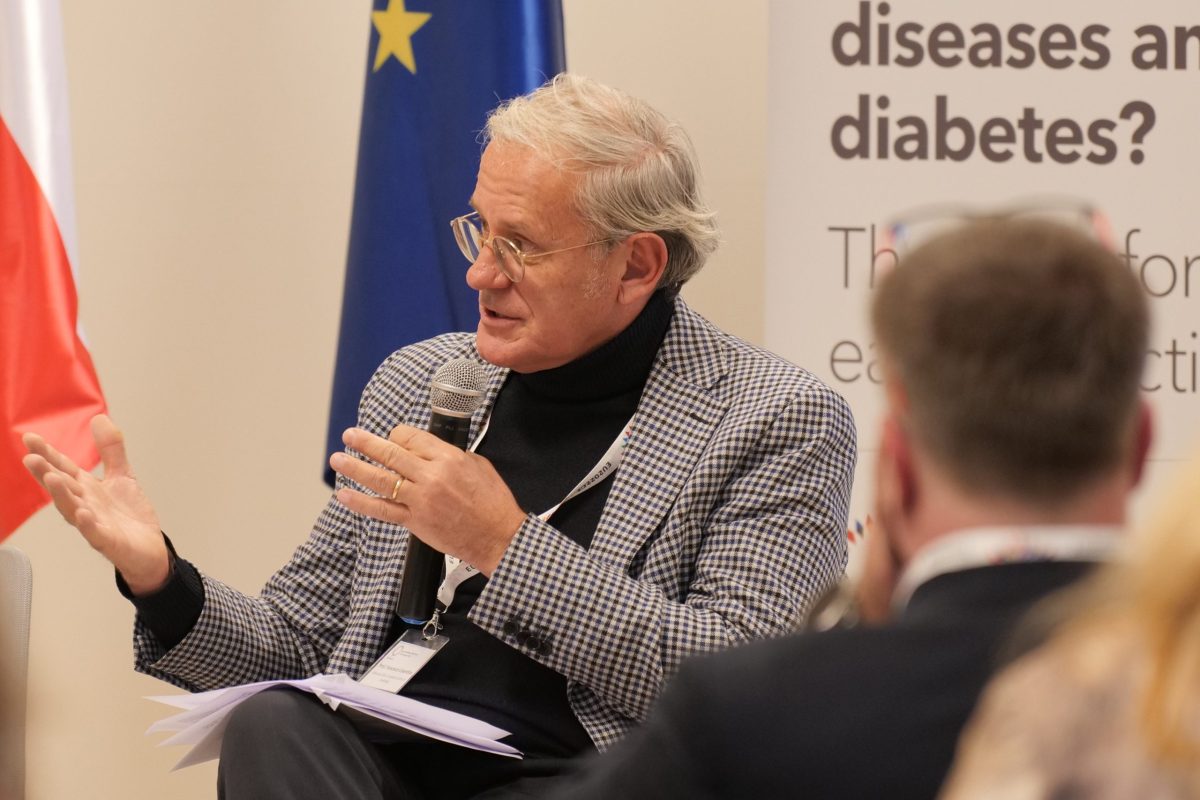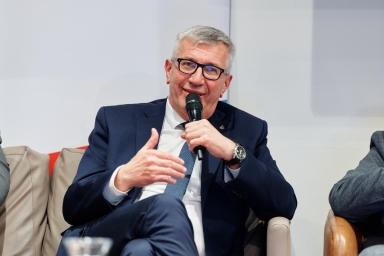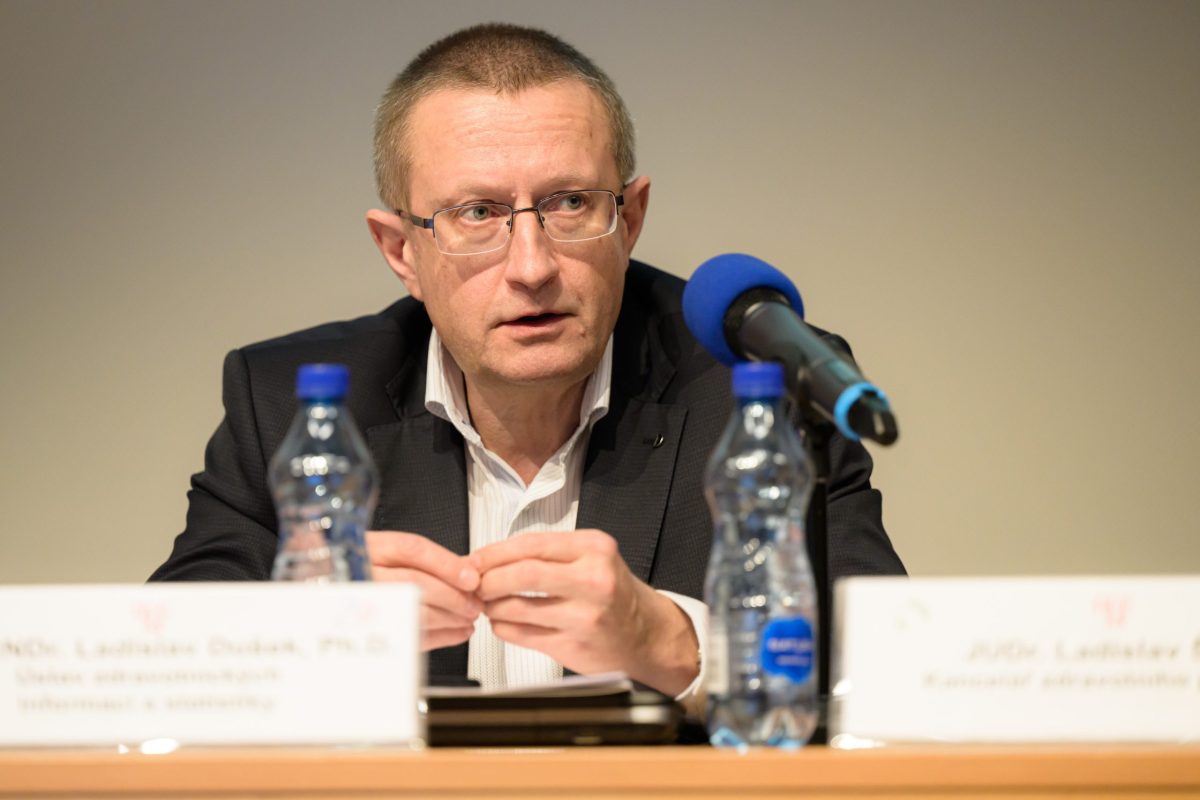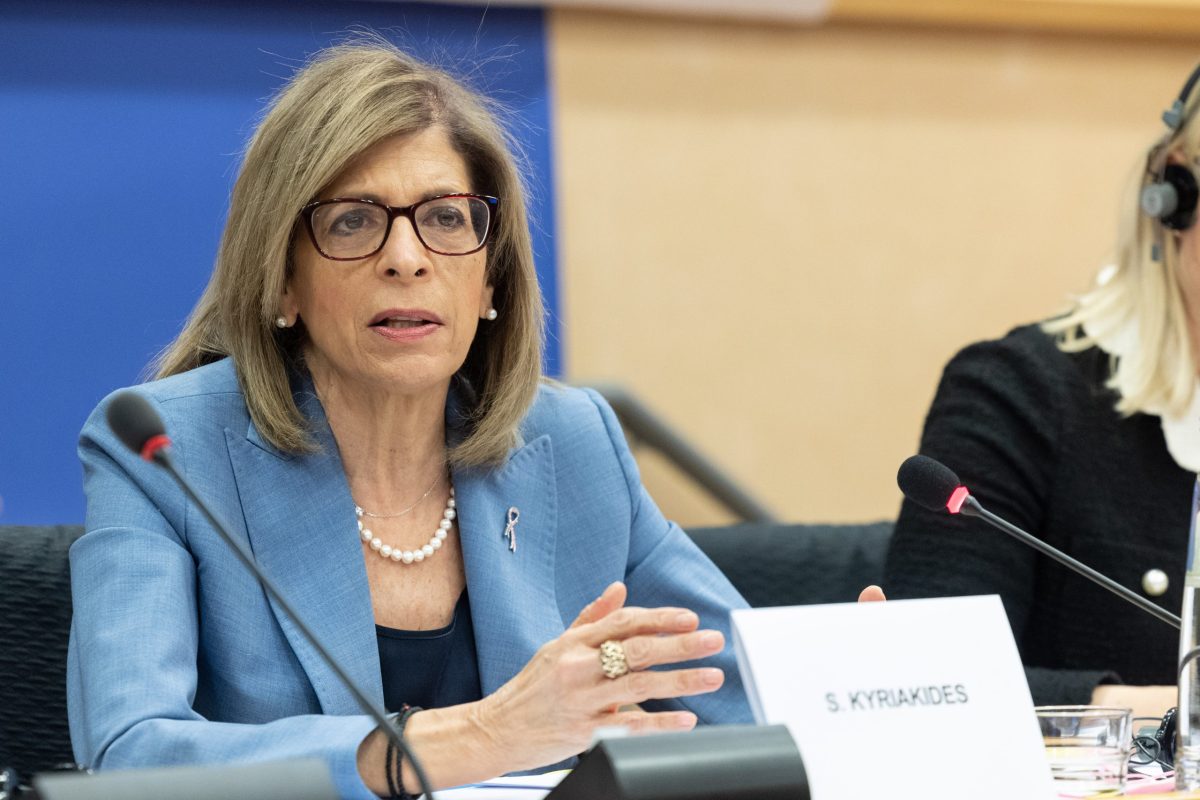Cardiovascular diseases are the most frequent cause of morbidity and mortality in Czechia as well as most of the European countries. According to expert estimates, annual costs of this burden reach about EUR 200 billion in Europe. “Since we already have the cancer plan, I think it’s unthinkable and unreasonable not to have one for cardiovascular diseases, the mortality of which is twice as high when compared with cancer,” says Francesco Cosentino, co-chair of the Advocacy Committee of the European Society of Cardiology. The Italian professor of cardiology at the Karolinska Institute and University Hospital in Stockholm talked with us last week, during an international expert conference held in Brussels under the auspices of the Czech Presidency at the EU Council.
Current data across Europe indicate that the burden of cardiovascular diseases, decreasing or at least stagnating for decades, is again on the rise. Why is that?
Well, the issue is complex but, generally, it is true. Despite the fact that most of the cardiovascular complications are preventable, what we are witnessing nowadays is that there is an increase in both cardiovascular morbidity and mortality. This is probably due to the combination of aging of the population, lack of early detection, and rather ineffective prevention campaigns. Therefore, we have to rethink completely the way we approach the public in order to have a more effective strategy with a real impact on the incidence of cardiovascular diseases.
What needs to be changed?
We have to leave the silos approach. Cardiologists talk about atherosclerosis, endocrinologists about problems due to high glucose levels and nephrologists about the kidney disease. Yet, they are all together under a common umbrella, a common denominator. We, healthcare professionals, therefore need interaction and join forces across specialty borders. This is something new and has not taken place yet. If we have an integrated strategy, we may have a higher impact on the public and patients, both the future ones and those who have already developed complications.
Mohlo by vás zajímat
Europe can save money with a joint cardiovascular health plan
You are one of the two co-chairs of the Advocacy Committee of the European Society of Cardiology (ESC), so raising public awareness is a task right for you. The ESC has just organized a conference where experts as well as policymakers were discussing the need for a new cardiovascular health plan. What are your next steps then?
Right now there is a very good momentum for action. The policymakers are more aware that there is a problem and that we need to join forces to solve it. The Healthier Together Initiative mentioned by the Commission at the conference is important but cardiovascular diseases and diabetes are just two of five strands there. No doubt it is a positive thing to raise awareness also about respiratory diseases but it is cardiovascular disease (CVD) that is no.1 killer in the Member States and worldwide. Every day 5,000 people die of cardiovascular disease related causes in Europe. This is worth tackling as a single issue. Therefore, the next step is to advocate for cardiovascular health and call on the European Commission and Member States to support an EU cardiovascular health plan.
Do you envisage something similar in scope as the Europe´s Beating Cancer Plan? It is a very comprehensive document, starting with supporting healthy lifestyle and ending with the quality of life after the disease.
Definitely. Since we already have the cancer plan, I think it’s unthinkable and unreasonable not to have one for CVD, the mortality of which is twice as high when compared with cancer.
Besides healthcare related issues, the cancer plan includes also areas such as education, social care, research. Do you plan to cover it by the cardiovascular plan too?
Yes. We at the ESC are very active in educational activities and continuous medical education of health care professionals should be definitely a pillar of the EU cardiovascular health plan. Funding of research and innovation is also essential for the preservation of cardiovascular health across European citizens. Other key components of the future EU cardiovascular health plan are the creation of a European Cardiovascular Health Knowledge Centre to address the gaps and fragmentation in reliable data and ensure connectivity across the spectrum of CVD and related conditions and cross border collaboration, co-creation of national cardiovascular health plans to provide a platform for national implementation of the European cardiovascular health plan with investments on primary and secondary prevention, and minimising digital gaps across Europe (i.e. creating policy environment for digital transformation in cardiovascular health).
Talking about the cancer plan, the ESC actually stressed to the Commission that cancer is also a significant comorbidity of CVD and asked – rather unsuccessfully – for more space to be devoted to CVD in the document.
Yes. It is an important comorbidity, due to the pathological condition itself as well as to the chemotherapeutic treatments that patients are undergoing. The cardiovascular system gets injured by both the disease and the treatment. The heart deteriorates and heart failure starts to be no.1 cause of hospitalization, as we heard this morning.
It was mentioned in this context that we are victims of our own success.
Yes. We can treat acute events but, as a result, are facing growing incidence of chronic diseases such as heart failure.
One of the main reasons why Health Commissioner Stella Kyriakides put forward her Beating Cancer Plan were great inequalities between Member States in patient access to adequate care. What is the situation in the field of CVD?
Very similar. There are clear differences between regions not only within Europe itself but also within individual countries. If you live in Brussels or Stockholm, you have heart facilities near you but if you live for example in the southern part of Italy, you may not have the same access. And this should not be. It is another reason why we need to fight the burden of CVD at the European level.
When do you think it is achievable to have such a plan already on paper?
Well, it is the policymakers that determine the agenda and priorities. They also have the power to raise awareness in the public. So the timing is very much up to them. We need to collaborate with them. This is our advocacy task, to plant first seeds of the cardiovascular plan. The ESC is in a good position to do it as it represents national cardiac societies from 57 countries, including the Czech Republic. I believe that working together we will be able to push this forward. The CVD costs the EU economy 200 billion euros per year and if we have a cardiovascular health plan, we would definitely save a large part of this money.
We need complex and standardized data
The conference tackles the issue of CVD jointly with diabetes. Why?
Cardiovascular diseases are the major complications of diabetes. Therefore, it is very important to screen patients with diabetes for CVD. And vice versa – patients with CVD may have undetected and undiagnosed diabetes. Therefore, we also need to have early screening of diabetes. There is clear interconnection between these two conditions. When combined, the mortality and morbidity rate is skyrocketing. This is why we feel it is important to have a joint interdisciplinary action for early screening to be able to prevent complications.
In your presentation, you suggested establishment of joint cardio-metabolic clinics. Is there already any experience with such facilities in any of the Member States?
These units are present in some countries but they are still very few across Europe. There are barriers, political and infrastructural. But I am convinced that this is the way forward – having different specialists in a single location, dealing with the individual patient and tackling his or her problems from different angles. And the patient does not need to go from one clinic to another to have different consultations which may result in a situation where he or she gets slowly lost in translation.
Still here we talk about secondary line of care. It was mentioned that the front line should be the primary level.
Yes, it is the most important level of care because most of the patients with CVD and diabetes are managed by primary care physicians.
The ESC is developing a risk score for diabetes patients to assess their individual risk of developing CVD. Could you describe it more in detail?
We are introducing a novel, dedicated, type 2 diabetes-specific, 10-year atherosclerotic cardiovascular disease (ASCVD) risk score (SCORE2-Diabetes) for patients with type 2 diabetes without ASCVD or target-organ damage. This score provides data on the 10-year risk for CV death, non-fatal myocardial infarction, and non-fatal stroke based on individual patient characteristics, and serves as a guide for our clinical decision-making in patients with diabetes at moderate or high risk, but no clinical overt ASCVD. New clinical practice guidelines for CVD and diabetes will be published in 2023 with instructions how to use SCORE2-Diabetes.
So far, we have been talking about policymakers and health professionals. What about patients whose voice is receiving more and more attention across Europe? What is their role?
Well, thanks to the work of our Advocacy Committee, we have created the ESC Patient Forum where we listen to the voice of patients and their problems as regards CVD. The aim is patient empowerment, making them part of the clinical decision-making process.
When talking about patient involvement, Czech Deputy Minister Jakub Dvořáček mentioned the non-government organisation in the field of rare diseases EURORDIS and the amount of work they have done during and together with the Czech Presidency. Is there any similar organisation representing patients in the field of cardiology that could be a similar partner for you in your effort to convince the policymakers of the need for the cardiovascular health plan?
Well, there are many patient organizations but it is also a very sensitive issue. We have to be careful because patient organizations may be steered by stakeholders with different agendas. What we have done is that we created the ESC Patient Forum, as already mentioned. At the moment, we are at the beginning of this initiative which I believe will be crucial in any future ESC endeavours.
Does the Forum include individual patients or patient organisations?
Just individual patients. They commit themselves on a voluntary basis.
Czech cardiologists repeatedly stress the importance of data collection and analyses in order to prepare effective strategies for the future. What is your view on the role of data in cardiology?
I live and work in Sweden and you know that Scandinavia, and Sweden especially, are fantastic in digitization. There is a system of national registries. Clinical data are recorded online. Echoing policy developments in the framework of the European Health Data Space, we call for the creation of a European Cardiovascular Health Data Knowledge Centre to ensure appropriate infrastructure, interoperability, and data protection, bringing together existing registry and electronic health record platforms. The goal would be comprehensive and standardized data to support strengthening the health system, innovation, research, person-centred and value-based decision-making, risk stratification and integrated-data driven care focused on the needs and goals of the patients.
Helena Sedláčková
Francesco Cosentino is professor of cardiology at the Karolinska Institute and University Hospital in Stockholm. Medical school and specialty training at the University of Rome, Cardiovascular Fellowship at the Mayo Clinic & Foundation, Rochester, MN, USA, where he also obtained PhD in Cardiovascular Pharmacology. Former lecturer and titular professor of cardiology at the University Hospital of Zurich. Former associate professor of cardiology, Sapienza University of Rome. Currently co-chair of the ESC Advocacy Committee. Recipient of grants and prizes from national and international research councils and private foundations and leading author of more than 200 original articles in top-ranking, peer-reviewed journals.







